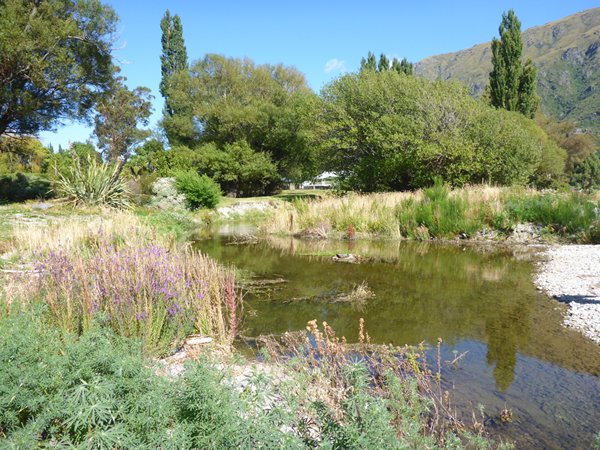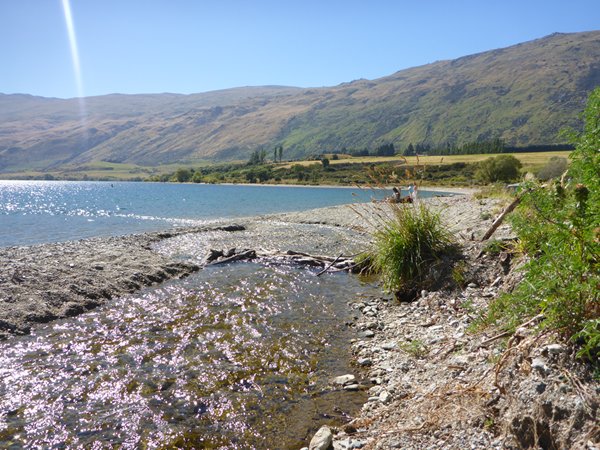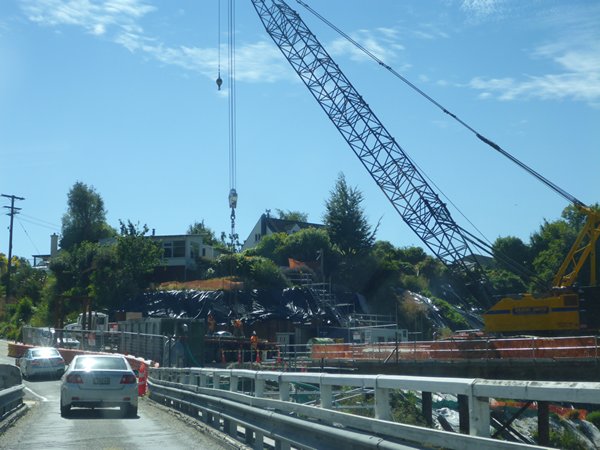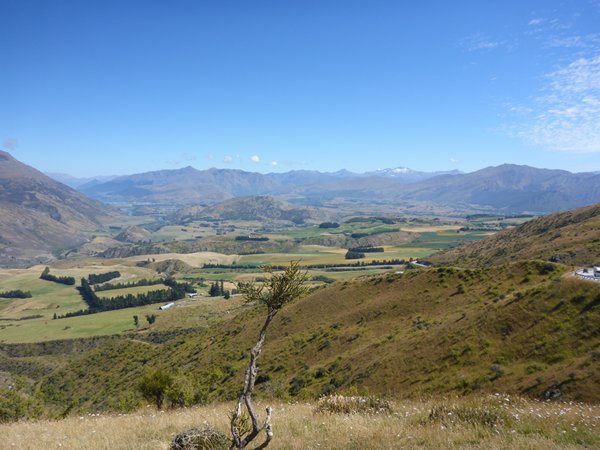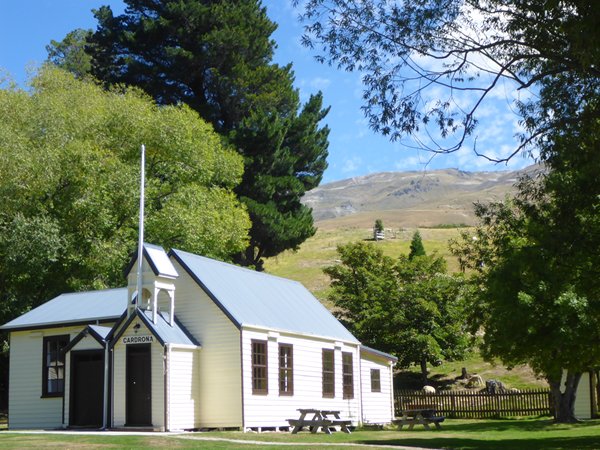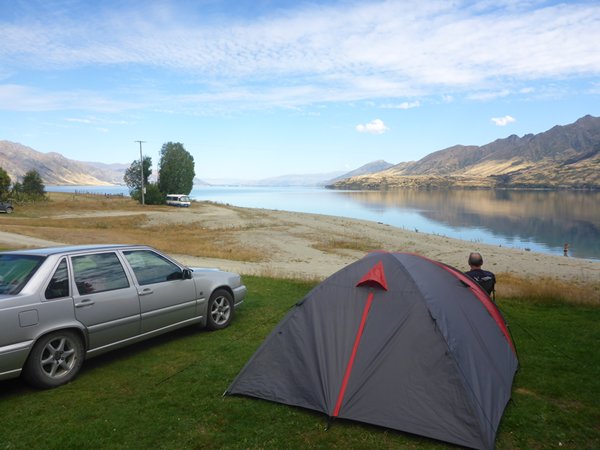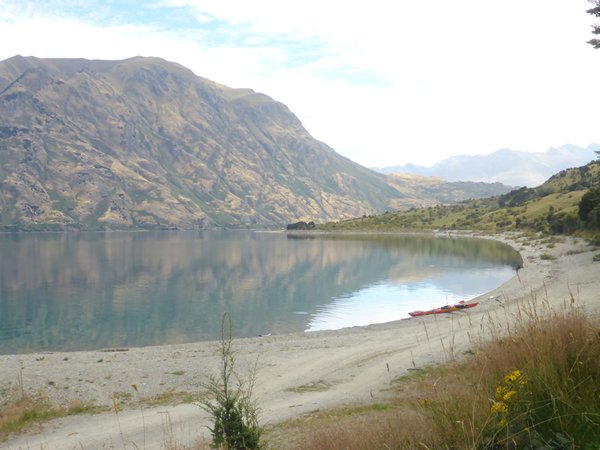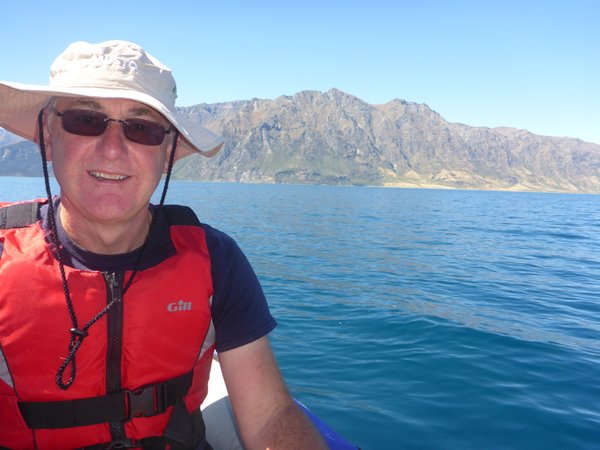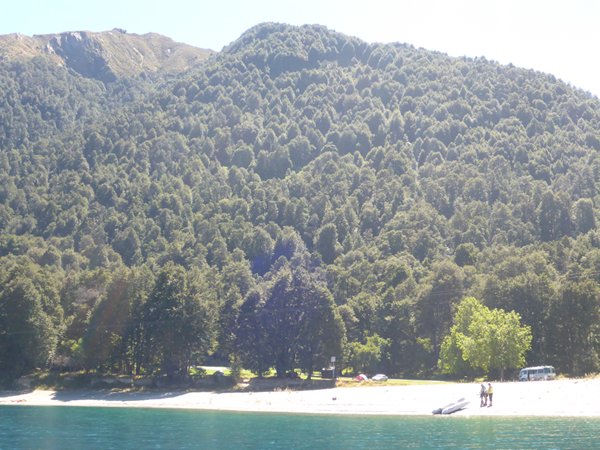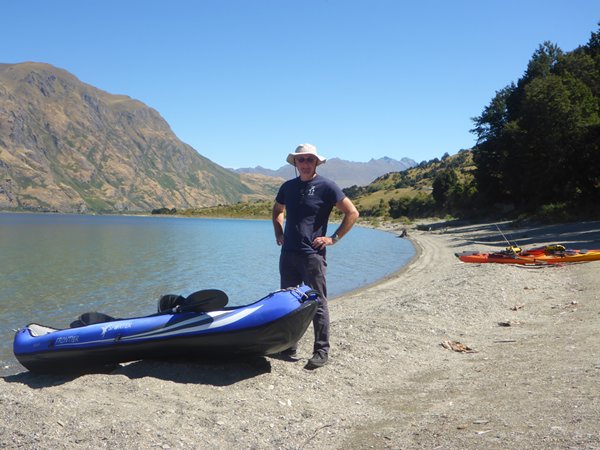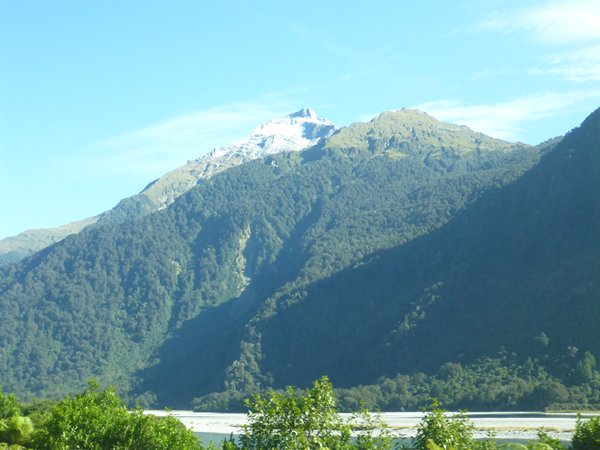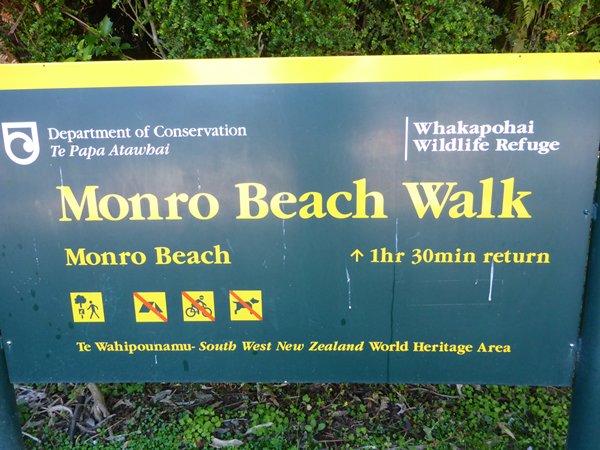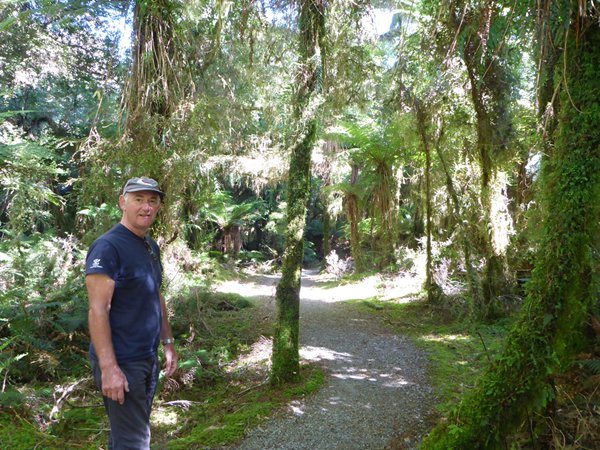Forty Hours in the Wilderness

|
Blue Lakes and Mountain Scars We were on the road again, firstly Highway 6, thick and orange on the map and then onto the Cardrona Ski Road, through the Pisa Mountain Range, a thin yellow line on the map that the road side sign told us was OPEN. We crossed the Oreti River that meets the sea near Invercargill where Vicky took her beach stroll. I couldn’t reason then the name of one farmstead, Five Rivers, with the fact the numerous rivers we drove over were almost dry and the farm was irrigating the grass. Shortage of rain or too much irrigation or both I wondered. NZ exports much dairy produce to China and is now facing competition from South America who is also exporting big time to the Orient. When will the quest to maintain exports from marginal land become unviable? Small town Garston has seen the changes over the years. Gold was discovered here and 65,000oz of alluvial gold was panned, but those days are long gone and now ski-ing and farming are the main industries. We were entering another Lake District and the first we came to was Lake Wakatipu. It was time for elevenses so we found our way to a lake head car park down Churchill Road and soaked up the exquisite beauty of the glistening lake under the cloudless sky. The neat homes could be for retirement, Airbnb investments or second homes but many were family homes in this pristine part of Central Southland. Back on the road the Eyre Mountains loomed alongside and places along the road showed where landslides had been cleaned up. There is so little soil the trees lock their roots together to cling onto the sheer rock walls, relying on moss and lichen for nutrients, nature’s own hydroponics. With the weight of heavy rain or snow ‘tree avalanches’ are a common occurrence and when one tumbles at the top it brings down dozens of others in a domino effect leaving an ugly brown scar on the hillside. Lichen and moss soon cover the scar and the re-growth begins. We arrived at the end of the Southern Scenic Route and were now on the Gold Heritage Route. This was an area of plenty where a lavish life style could be enjoyed. Vast deer farms and deer hunting abound, golf courses, water sports, every driveway contained a small aluminium boat and we wondered if they benefited from the production of aluminium at Bluff. Spa Resorts, ski-ing, vineyards all amidst mountains rising to 2400 metres. The main town is Queenstown and it is the hub of tourist activity in the area with numerous other towns taking spin off business. It is very busy and attracts people who want to see NZ via the thrills of short time adventures. We gave it a miss, Zoonie gives us plenty of adventures. But we did see the spectacular flight path that planes use to land at the airport. Vicky had just climbed the steep zig zag Cardrona Valley Road to 1936 metres and needed a break to cool down and get her breath back. So while she hissed and whirred we watched jet planes coming over the pass to see the Queenstown area and runway ahead. Fields of Barley swayed in the breeze and 19’ of warmth helped the ripening. The Gin and Raspberries Gold Company of Cardrona had found a gold nugget in the Motukituki River leading to a gold rush. The town swelled from hundreds to thousands and thrived for a short time then it became a backwater until the ski-industry moved in and gave it a seasonal reprieve. The restful atmosphere we had so enjoyed in the Fiords was all gone as the press of frenzied tourism was everywhere. Snow-capped and glaciated Mount Aspiring at 3000 metres was staring us in the face at Wanaka where we had thought we might spend the night. Oh no, too busy for us. We grabbed an ice cream and got back in the car. “I’ll just top up with fuel,” Rob said, “You what, not at $221.9 per litre you won’t, my love” I reasoned, “We’ve still got half a tank, that’ll get us to the coast if we off gas downhill, remember La Gomera,” where we coasted downhill for 21kms. This area is burgeoning, new housing estates are going up everywhere quicker than bamboo. Housing development, the tourism rush, how long will this one last? We were out of there; nowhere else on the South Island had we seen such change, not even in Christchurch. Phew, back into a Scotland lookalike, The Southern Alps. Lakewater as smooth as a fur seal’s pelt, vast breathtaking mountains; we were on the windy road along the shore of Lake Hawea and before crossing the bridge that joins it to Lake Wanaka we turned right along a dusty track over private land to Kidds Bush Camp Site run by the DOC. It was on the shore of Lake Hawea and we had seen it from the road. Soon our little tent was pitched right on the bank above the water’s edge and peace enveloped us. OK the sand flies were a bit if a pain but we would be staying here a while. Forty hours in the wilderness. The next morning dawned cool but beautiful once again and as soon as the sun rose above the mountain beech line on the far hills it drove away the shadows and the day started to warm up. I was curious to see what was around the headland so we launched the inflatable kayak and paddled off from the shore. No biting bugs on the water, that was a relief. Trampers walked along the shore in the same direction we were paddling and as we slid around the corner we found more of the same, beautiful lake and mountains bathed in sunlight. Back at camp a mature gentleman from a campervan told us he used to farm near here and this weather was very unusual. He had seen gale force winds build up a frightening fetch along the length of the lake and whisk campers’ tables and sunbrellas up into the hillside never to be seen again. After a lunch of Vicky ripened avocados and salad I went for a swim, the lake water was saying “swim in me”, so I did. It was cool and delicious. The retired couple who had just started as volunteers in the camp told us that a fortnight ago a film unit starring Reece Witherspoon, of Walk the Line fame amongst many others, was here filming ‘Wrinkles in Time’. So we’ll keep our eyes open for that one. As an interesting aside, later in the afternoon a flock of hundreds of sheep was driven down the track by the camp. Well that caused a stir and we all watched as dogs ran all over the place including along the sheeps’ backs to keep them in order. The dust they created was something. Whenever a vehicle started onto our 6km track we could watch its progress behind the rises just by the dust trail. We went to sleep to the sounds of late returning motorboats, cicadas working overtime and lapping waves. Around 2.00am I awoke to hear the NZ long tailed cuckoo calling. Eventually another one replied, its call sometimes overlapping the other. The Haast Pass was a very modest affair and Vicky creamed up and over the slight elevation towards the Tasman coast, out of our own personal wilderness and into Westland. The construction of the Haast Highway along the coast was started back in the 1920s and 30s by using unemployed labour. The hardest sections were blasted out after the Second World War and the brick ammunition huts can still be seen. Finally the magnificent West Coast Highway was opened in 1960. We were on our way to Fox Glacier, a town named after the glacier, but on route we stopped just over the Moeraki River for a lovely woodlands walk down to the Monro Beach where the Fjord Crested Penguins are known to come ashore and breed. Fortunately there were no penguins on the beach to disturb, just sand flies that shortened our stay. On our way back through the woods and over the numerous streams and boggy bits Rob and I wondered why the beach is opened up for visitors when the DOC reports that disturbing the penguins when they are nursing their young is causing their numbers to decrease. If they want to protect them surely they need to control access to the beach during breeding times. |
